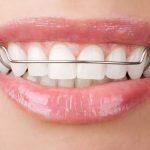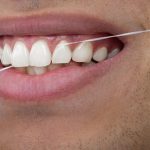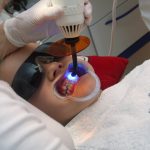Brace Yourself: Understanding Why Your Teeth Hurt with Braces
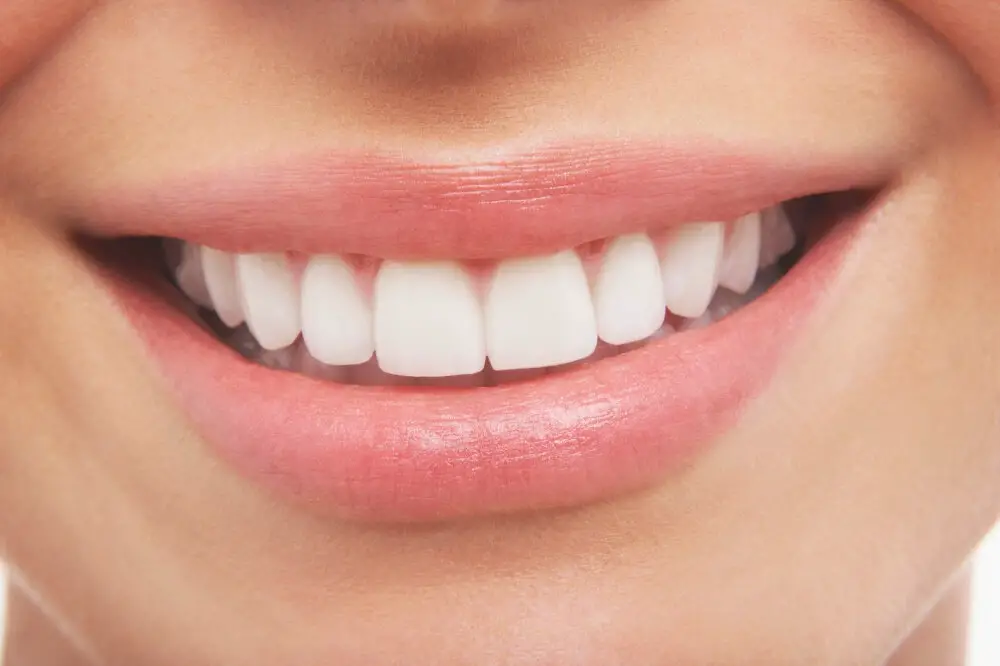
Braces can be a life-changing experience for many people, but the process is not always smooth sailing. While braces can help straighten teeth and improve the overall appearance of the smile, the process can also be painful at times, causing discomfort and even soreness. Understanding why your teeth hurt with braces is essential to being able to manage the pain effectively and ensure a successful outcome. The discomfort associated with braces is due to the fact that they apply constant pressure to the teeth, which can cause them to shift and move over time. This pressure can be uncomfortable, especially during the initial stages of wearing braces. However, it is important to remember that this process is necessary to achieve the desired results. With proper care and attention, the pain associated with braces can be managed effectively, allowing for a successful outcome and a beautiful, healthy smile.
Braces are orthodontic devices that are used to correct and align teeth and jaws. They consist of brackets, wires, and bands that work together to apply pressure to the teeth and gradually move them into the desired position. Braces are commonly used to treat dental issues such as overcrowding, gaps, overbites, underbites, and misaligned teeth. People usually get braces to improve their dental health, enhance their appearance, and boost their self-confidence. Although braces can cause discomfort and pain, the benefits of having straight and healthy teeth make the process worth it.
Braces are a common orthodontic treatment that involves wires, brackets, and bands to align and straighten teeth. However, despite their effectiveness, they can be uncomfortable or even painful for some individuals. The constant pressure and friction caused by the wires and brackets can cause soreness and tenderness in the mouth, especially during the first few days after the braces are applied or adjusted. Moreover, the brackets and wires can irritate the lips, cheeks, and tongue, causing cuts, sores, and ulcers that can make eating, speaking, and even smiling a challenge. Therefore, it is essential to take good care of your braces and follow your orthodontist’s instructions to minimize discomfort and ensure a successful treatment outcome.
The journey towards getting a beautiful smile often involves getting braces. However, the process of getting braces can be painful and uncomfortable, leaving many patients wondering why their teeth hurt. In the article titled \Brace Yourself: Understanding Why Your Teeth Hurt with Braces,\ we will delve into the reasons behind the discomfort that comes with wearing braces. From the initial installation of the braces to the adjustments made over time, we will explore the various factors that contribute to the pain and offer some tips on how to alleviate it. By the end of this article, you will have a better understanding of why your teeth hurt with braces and be equipped with the knowledge to make the journey towards a perfect smile a little less painful.
The Basics of Braces

Braces are orthodontic devices that are used to straighten and align teeth. They are made up of brackets, wires, and elastic bands that work together to apply pressure on the teeth and move them into the correct position. Braces can be used to correct a wide range of dental issues, including crowding, gaps, and crooked teeth. They can also be used to fix bite problems, such as overbite, underbite, and crossbite. Braces can be worn by people of all ages, but they are most commonly used in children and teenagers. The process of getting braces typically involves a consultation with an orthodontist, who will evaluate the patient’s dental condition and recommend the best course of treatment. Once the braces are in place, the patient will need to visit the orthodontist regularly for adjustments and check-ups. It is important to take good care of braces to ensure that they work effectively and to prevent dental problems such as cavities or gum disease. This includes brushing and flossing regularly, avoiding hard or sticky foods, and wearing a mouthguard during sports or other physical activities. While braces can be uncomfortable and may cause some pain or soreness, the end result of a beautifully aligned smile is well worth the effort.
Braces consist of several components that work together to straighten teeth and align the jaw. The brackets are small, square or rectangular pieces that are cemented onto each tooth. These hold the archwire in place, which is the thin metal wire that runs along the brackets and applies pressure to move the teeth into the desired position. Elastic bands are also used to apply additional force to the teeth. In some cases, metal bands may be placed around the back molars to provide extra support. Other components may include springs, hooks, and rubber bands, all of which are used to adjust the position of the teeth and jaw. While braces can be uncomfortable at first, the end result is a beautiful, healthy smile that is well worth the effort.
Braces work by applying a constant, gentle pressure on the teeth to gradually move them into the desired position. The braces consist of brackets that are attached to the teeth and a wire that runs through them. The wire exerts pressure on the brackets, which in turn applies pressure on the teeth. Over time, the teeth move in response to this pressure, and the wire is adjusted periodically to continue the movement. Additionally, elastic bands may be used to further manipulate the teeth into the correct position. While the process of straightening teeth with braces can be uncomfortable at times, the end result is a beautiful, healthy smile.
Braces are a common orthodontic treatment that helps straighten teeth and improve oral health. However, many people experience discomfort and pain during the treatment process. It’s important to understand that braces can be adjusted over time to reduce discomfort and improve results. Orthodontists will monitor progress and make necessary adjustments to ensure that the braces are working properly and effectively. These adjustments may include tightening or loosening wires and brackets, or changing the position of rubber bands. Patients should communicate any discomfort or pain they experience to their orthodontist so that adjustments can be made accordingly. With patience and proper care, braces can provide a beautiful, healthy smile for years to come.
Causes of Discomfort

Having braces can be a challenging experience, and one of the most common complaints is discomfort. There are several reasons why braces can cause discomfort, and it is essential to understand them to manage the pain effectively. One of the primary causes of discomfort is the pressure that the braces exert on the teeth. Braces consist of brackets, wires, and rubber bands that work together to move the teeth into the desired position. As the teeth move, the braces apply pressure to the surrounding tissues, causing discomfort. Another cause of discomfort is the irritation that braces can cause to the mouth. The brackets and wires can rub against the lips, cheeks, and tongue, leading to soreness and irritation. In addition, food particles can get trapped in the braces, leading to bacterial growth and inflammation. Poor oral hygiene can exacerbate this problem, as it can lead to gum disease and other complications. To alleviate discomfort caused by braces, it is essential to practice good oral hygiene and visit the orthodontist regularly. Pain relief medication and numbing gels can also be helpful, but it is crucial to use them as directed by a healthcare professional.
Braces can cause discomfort and pain in your teeth due to various reasons. The most common reason is the pressure applied to the teeth caused by the braces. As the braces slowly move your teeth into their correct positions, the pressure can cause some discomfort. Another reason for pain is the friction between the braces and your cheeks, tongue, and lips. This can cause sores or irritation in your mouth, leading to discomfort. As your teeth move, the ligaments that hold them in place stretch, causing some mild pain. Additionally, after each adjustment, you may experience some discomfort as your teeth adjust to the new pressure and movement. Despite these potential discomforts, the end result of a beautiful, straight smile is worth the temporary pain.
Discomfort is a subjective experience that varies depending on the individual’s pain tolerance, the severity of their condition, and the type of treatment plan they are undergoing. For instance, some people may experience mild discomfort during the first few days of wearing braces, while others may feel intense pain and soreness for several weeks. Moreover, the type of braces used, such as metal braces, ceramic braces, or clear aligners, can also affect the level of discomfort experienced. Thus, it is essential to follow the orthodontist’s instructions carefully and communicate any discomfort experienced during treatment to ensure a comfortable and successful outcome.
Discomfort is a common experience for anyone who wears braces. It is important to remember that this discomfort is often temporary and can be managed with proper care. The initial discomfort may arise from the pressure that the braces put on the teeth to move them to their desired position. However, this discomfort should subside after a few days. Patients can manage the discomfort by taking pain relievers recommended by their orthodontist, eating soft foods, and avoiding hard and sticky foods that can damage the braces. Patients should also maintain good oral hygiene by brushing and flossing regularly to prevent any infections that may cause discomfort. By taking these measures, patients can alleviate the discomfort that comes with wearing braces and ensure that their treatment is successful.
Tips for Managing Discomfort
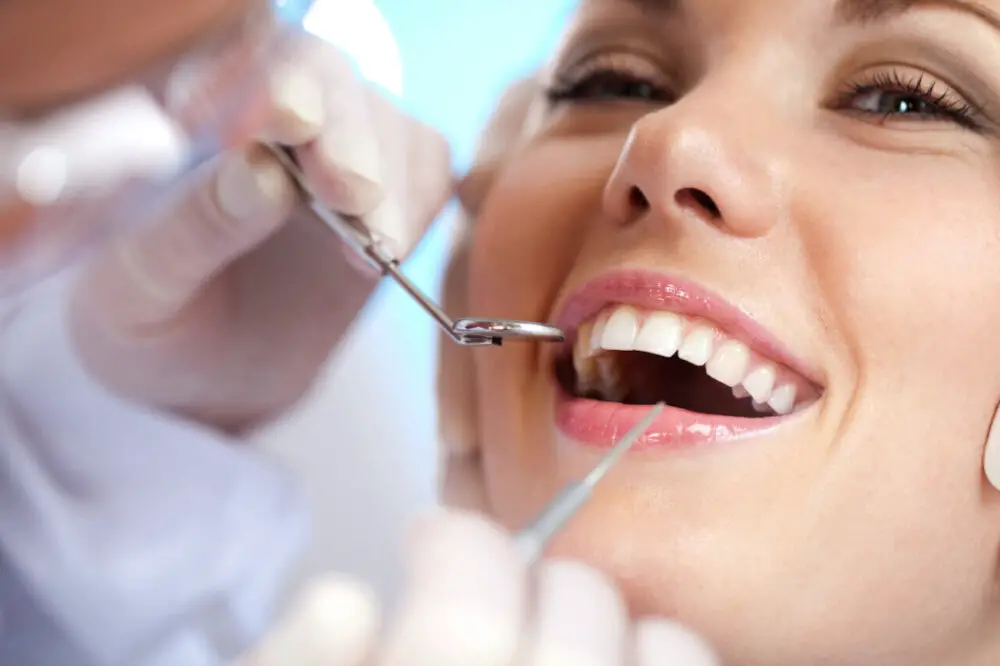
Braces can cause a significant amount of discomfort, especially in the first few weeks after they have been fitted. This may include soreness, tenderness, and even pain in the teeth and gums. However, there are several effective ways to manage this discomfort and make the adjustment period more bearable. Firstly, over-the-counter pain medications such as ibuprofen or acetaminophen can be taken to alleviate any pain or discomfort. It is essential to follow the recommended dosage and not exceed the maximum daily limit. Secondly, using orthodontic wax can be a great way to relieve irritation caused by the brackets and wires rubbing against the inside of the mouth. This wax can be applied to the brackets and wires to create a smooth surface and prevent any further irritation. Lastly, sticking to a soft food diet and avoiding crunchy or sticky foods can help reduce discomfort while eating. In addition to these tips, maintaining good oral hygiene can also help prevent discomfort and promote healing. This includes brushing and flossing regularly to remove any food particles that may get stuck in the braces. Using a mouthwash can also help kill any bacteria and soothe any inflammation. It is also important to attend regular appointments with the orthodontist to ensure that the braces are adjusted correctly and any issues are addressed promptly. By following these tips, managing discomfort during the adjustment period can become much more comfortable, allowing patients to enjoy the benefits that come with having straighter teeth.
When it comes to easing discomfort from braces, there are several practical tips that can help. One of the most common ways to alleviate pain is by using orthodontic wax, which can be applied to the brackets and wires to reduce irritation. Additionally, taking over-the-counter pain relievers like ibuprofen or acetaminophen can help manage any discomfort. It’s also important to avoid hard or sticky foods, which can cause more pain and damage to the braces. Instead, opt for softer foods like soups and mashed potatoes. Lastly, maintaining good oral hygiene habits, including regular brushing and flossing, can help prevent additional discomfort and keep your braces in good condition. These tips can help make the process of wearing braces more comfortable and manageable.
Maintaining good oral hygiene with braces is crucial to prevent tooth decay, gum inflammation, and other oral health problems. Braces create crevices and tight spaces that are difficult to clean, trapping food particles and bacteria that can cause plaque buildup and cavities. Neglecting oral hygiene during orthodontic treatment can also lead to bad breath, discoloration of teeth, and even permanent damage to tooth enamel. Therefore, it is essential to brush and floss regularly, use mouthwash, and follow the orthodontist’s instructions on how to care for braces properly. By doing so, patients can ensure healthy teeth and gums, a beautiful smile, and a successful orthodontic treatment outcome.
If you have recently gotten braces, it is normal to experience some discomfort as your teeth adjust to the new appliances. However, if the discomfort persists or becomes severe, it is important to communicate with your orthodontist. They can help identify the cause of your discomfort and provide solutions to alleviate your pain. Ignoring prolonged or severe discomfort can lead to more serious dental issues down the line. So, don’t suffer in silence. Reach out to your orthodontist and take steps towards a pain-free and healthy smile.
When to Seek Help

When it comes to wearing braces, it’s common to experience some discomfort or pain. However, there are certain situations where you should seek help from your orthodontist. If you experience severe pain that doesn’t subside after taking over-the-counter pain medication, it could be a sign of a more serious issue. Your orthodontist can evaluate the cause of your pain and provide the appropriate treatment. Similarly, if you notice any signs of infection, such as swelling, redness, or pus around the braces or in your mouth, you should seek immediate help. Infections can spread quickly and cause more serious problems if left untreated. Another reason to seek help is if you have broken or loose brackets or wires. These can cause discomfort and may even lead to injury if they poke or scratch the inside of your mouth. Your orthodontist can repair or replace the damaged components to ensure that your braces continue to function properly. It’s also important to seek help if you experience any other unusual symptoms, such as difficulty chewing or speaking, or if your teeth or jaw feel misaligned. Your orthodontist can assess your situation and make any necessary adjustments to your treatment plan to ensure that your teeth and jaw are moving into their proper positions. Remember, it’s always better to be safe than sorry when it comes to your oral health, so don’t hesitate to seek help if you’re experiencing any issues with your braces.
Braces are a common orthodontic treatment used to straighten teeth and correct bites. While it is normal to experience some discomfort or soreness after getting braces, persistent pain or discomfort may be a sign of a larger issue. Broken brackets, loose wires, or other orthodontic appliances can cause discomfort and should be addressed by an orthodontist as soon as possible. Ignoring these issues can lead to further complications, including tooth decay, gum disease, and even tooth loss. It is important for patients to communicate any discomfort or pain with their orthodontist and attend regular check-ups to ensure their braces are functioning properly.
If you’re experiencing any pain or discomfort when wearing braces, it’s important to schedule an appointment with your orthodontist right away. However, there are other warning signs that may not be related to pain that you should also be aware of. These include loose or broken brackets, wires that have come loose, or any unusual changes in the appearance of your teeth or braces. Additionally, if you’re experiencing difficulty speaking or chewing, this may also be a sign that you need to visit your orthodontist. Ignoring any of these warning signs could lead to further damage to your teeth or braces, so it’s important to address any issues as soon as possible.
Your oral health is crucial for your overall well-being, and it’s essential to maintain good dental hygiene to prevent dental problems such as cavities, gum disease, and tooth decay. If you’re undergoing orthodontic treatment with braces, it’s even more important to prioritize your oral health. Braces can make it challenging to clean your teeth, leading to plaque buildup and other oral health issues. Therefore, it’s crucial to practice good oral hygiene habits like brushing twice a day, flossing regularly, and using mouthwash. If you experience any pain or discomfort while wearing braces, seek professional help immediately. Your orthodontist can help alleviate the pain and ensure that your treatment is on track. Remember, your oral health is an investment in your overall well-being, so prioritize it and seek professional help whenever needed.
The article \Brace Yourself Understanding Why Your Teeth Hurt with Braces\ discusses the reasons why braces can cause discomfort and pain. It explains that when braces are first put on, the pressure they exert on the teeth can cause soreness and tenderness. This discomfort usually subsides after a few days. The article also highlights the importance of maintaining good oral hygiene while wearing braces to prevent tooth decay and gum disease. Additionally, it suggests using over-the-counter pain relief medication and applying a warm compress to alleviate pain. The article concludes by emphasizing the need to communicate any concerns or issues with your orthodontist to ensure that your treatment is as comfortable and effective as possible.
It is important to reiterate that although braces can be uncomfortable, the discomfort is typically temporary and manageable. The initial discomfort is often due to the adjustment of the braces and the pressure they apply to the teeth. However, as the teeth begin to shift and adjust, the discomfort usually subsides. It is also important to note that there are ways to manage the discomfort, such as using orthodontic wax to prevent irritation of the cheeks and lips, taking over-the-counter pain medication, and sticking to soft foods. It is important to remember that the end result of having a straight and healthy smile is worth the temporary discomfort of wearing braces.
Taking care of your teeth is essential, especially when you have braces. It’s essential to brush and floss regularly and avoid hard and sticky foods that can damage your braces and teeth. Additionally, communication with your orthodontist is crucial if you experience any discomfort or have any concerns. Your orthodontist can adjust your braces as needed, provide suggestions for pain relief, and ensure your treatment is on track. Remember, a little discomfort is normal when you first get braces, but if you experience severe or prolonged pain, don’t hesitate to speak up and let your orthodontist know. With proper care and communication, you’ll be on your way to a beautiful, healthy smile in no time.
Conclusion

In conclusion, braces are a common orthodontic treatment that can help improve the alignment of teeth and enhance the overall appearance of the smile. However, it is important to understand that the process of getting braces can be uncomfortable and even painful at times. Patients may experience various types of discomfort, such as soreness, tenderness, and pressure, as their teeth shift and adjust to the braces. It is essential for individuals to take proper care of their braces and follow the instructions of their orthodontist to minimize discomfort and ensure the best possible outcome. With patience, diligence, and proper care, the end result of a beautiful, healthy smile is well worth the temporary discomfort of braces.
